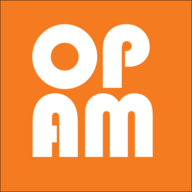Visit
http://osdoc.cogsci.nl/manual/forms/html
for the latest documentation
Custom HTML forms
Custom HTML forms are only supported in when running in a browser. Make sure to use the latest version of OSWeb, because this functionality improves rapidly.
The inline_html item allows you to implement forms using custom HTML.
- The
nameattribute ofinputtags corresponds to an experimental variable. Therefore, the text that is entered into the text input of Example 1 will be stored as the experimental variabletext_response. - For
checkboxandradioelements, you can use theidattribute to assign a specific value to the associated experimental variable. - You can use the
requiredattribute to indicate that a form cannot be submitted before a field has been filled out. - The form is closed when the participant clicks on an input of type submit.
- To include images from the file pool in a custom HTML form, first retrieve the URL to the file, assign it to an experimental variable, and then use this variable as the source for the
<img>tag (see Example 3).
Example 1:
<input type='text' name='text_response'>
<input type='submit' value='click here to continue'>
Example 2:
<p>Please select your age:</p>
<input type="radio" id="age1" name="age" value="30" required>
<label for="age1">0 - 30</label><br>
<input type="radio" id="age2" name="age" value="60">
<label for="age2">31 - 60</label><br>
<input type="radio" id="age3" name="age" value="100">
<label for="age3">61 - 100</label><br><br>
<input type="submit" value="Submit">
Example 3:
You can get the URL to an image in the file pool …
vars.img_url = pool['capybara.png'].data.src
… and then use this URL in a custom HTML form:
<img src="[img_url]">
<input type='submit' value='ok'>






